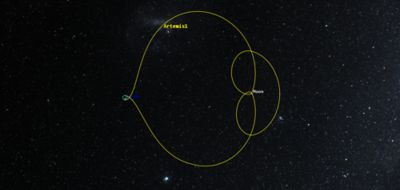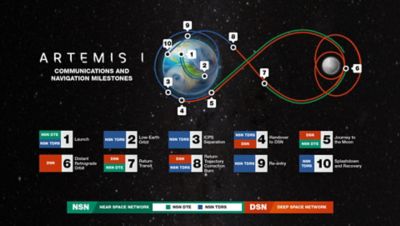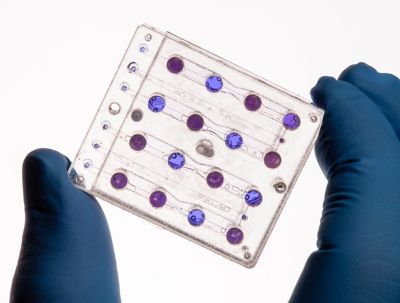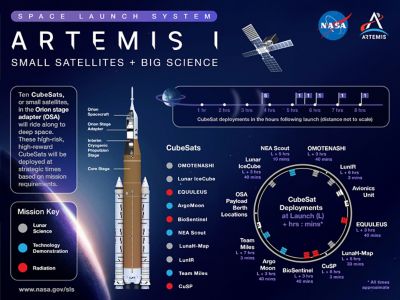-
-
학생용 무료 소프트웨어에 액세스하기
차세대 엔지니어에게 힘을 실어주는 Ansys
학생들은 세계적 수준의 시뮬레이션 소프트웨어를 무료로 이용할 수 있습니다.
-
지금 바로 Ansys에 연결하십시오!
미래를 설계하기
시뮬레이션이 다음 혁신을 어떻게 지원할 수 있는지 알아보려면 Ansys와 연결하십시오.
국가
무료 트라이얼
제품 및 서비스
학습하기
회사 정보
Back
제품 및 서비스
ANSYS BLOG
November 16, 2022
Simulation Helps Artemis Keep in Touch and on Track to the Moon
In the 1820s Baron Franz von Paula Gruithusen, a German physicist and astronomer, turned his small telescope toward the Moon and saw what he imagined was a city there, which he named Wallwerk. “Imagination will often carry us to worlds that never were,” said the American scientist Carl Sagan more than 150 years later. “But without it we go nowhere.” And in 2022, the first Artemis Moon mission launched, paving the way for humankind to not only return to the Moon after a 50-year absence – but to live and work there.
Artemis I is the first of three increasingly complex missions. The uncrewed mission is a test of NASA’s deep space exploration systems, including the Orion spacecraft that will carry astronauts from Earth to lunar orbit and back, the Space Launch System (SLS) rocket — the most powerful rocket in the world — and ground systems needed to support the launch and recovery of the spacecraft after its 1.3-million-mile journey. Future missions are planned to land astronauts on the Moon, deploy a spaceship in lunar orbit to act as a long-term gateway to the Moon, and to build a base camp on the Moon. What is learned from the Artemis missions could be used to explore destinations farther from Earth, including Mars.
Artemis-1 passing through perilune, traversing a construction of its trajectory produced in Ansys STK Astrogator. Along the way, the Lunar Reconnaissance Orbiter and the Korea Pathfinder Lunar Orbiter are observed keeping vigil about the Moon.
Connect and Communicate
Artemis is a prime example of digital mission engineering (DME), which is defined as the use of digital modeling, simulation, and analysis to incorporate the operational environment and evaluate mission outcomes and effectiveness at every phase of the life cycle. Since its inception, every state in America has made a contribution to the success of the Artemis program, not to mention the systems being designed in Europe. The system complexity and collaboration involved are astounding, and Ansys is proud that our software has played several roles in the Artemis mission.
For example, the RF Communications Team at NASA’s Marshall Space Flight Center routinely uses Ansys HFSS 3D electromagnetic simulation software and Ansys Systems Tool Kit (STK), a physics-based modeling environment for analyzing platforms and payloads. For the Artemis missions, the team is using STK for all of its SLS communication link analysis, and to visualize flight trajectories, contact with ground stations, and antenna radiation patterns.

A depiction of the Artemis-1 trajectory constructed with STK Astrogator. The animation (right) captures the general structure of the Artemis-1 trajectory and illustrates the unique path the spacecraft follows, a path that harnesses the simultaneously combined gravitational influence of both the Earth and the Moon. Also sharing a ride up with the Artemis-1 spacecraft are several ride-share missions. Some of these missions utilize both the Astrogator capability set within Ansys Systems Tool Kit (STK) as well as the Ansys Orbit Determination Tool Kit (ODTK).
Seamless communications are critical, of course, to send and receive data at each stage of the mission — enabling flight controllers to send commands to the spacecraft and receive data from Orion, the SLS, and the rocket’s upper stage. Navigation, or tracking, services enable the flight controllers to calculate where the spacecraft are along their trajectory through space.
NASA’s communication network is divided into two networks: the Near Space Network (NSN), which links to both Orion and SLS during prelaunch and launch for Artemis I, and the Deep Space Network (DSN), which is used for communications beyond low-Earth orbit. The two networks work together to support navigation for Orion via three-way Doppler tracking. With two ground stations on Earth in contact with Orion simultaneously — one from each network — NASA can triangulate Orion’s location relative to the ground stations.

NASA's constellation of tracking and data relay satellites (TDRS) provides near-continuous communications services during launch and the low-Earth orbit phases until the interim cryogenic propulsion stage (ICPS), when the Deep Space Network takes over. Image courtesy: NASA
What’s Brewing in Artemis’ Secondary Payloads?
The Artemis missions’ ultimate goal is something that has only been seen in science fiction: to establish a long-term presence on the Moon where astronauts can live, explore, and advance our scientific knowledge. But there is a lot of science to be done along the way. Some of that science will be conducted with the help of 10 tiny spacecraft. The 6U CubeSats measure just 10 x 20 x 30 cm and weigh less than 30 pounds, but they’re packed with technology … and yeast, in one instance.
International space agency partners and universities are involved with several of the secondary payloads, which will be deployed from the Orion stage adapter after NASA’s Orion spacecraft separates and is a safe distance away. To ensure the shoebox-sized spacecraft get where they’re going, some of the secondary payloads will use the Ansys Orbital Determination Tool Kit (ODTK) for navigation, including BioSentinel and LunIR.
BioSentinel uses single-celled yeast to study the impact of deep-space on living organisms over a long period of time. The CubeSat will fly past the Moon to a spot beyond Earth’s protective magnetic field. The BioSentinel team at NASA’s Ames Research Center will then trigger a series of experiments remotely, activating two strains of the yeast Saccharomyces cerevisiae to grow in the presence of space radiation. Samples of yeast will be activated at different time points throughout the six- to 12-month mission.

BioSentinel’s microfluidics card, designed at NASA’s Ames Research Center in Silicon Valley, California, will be used to study the impact of interplanetary space radiation on yeast. Once in orbit, the growth and metabolic activity of the yeast will be measured. Image courtesy: NASA/Dominic Hart
LunIR was developed by Lockheed Martin Space in Denver, Colorado. As it flies by the Moon, it will use a miniature infrared sensor to gather images and data about the lunar surface, such as material composition, thermal signatures, presence of water, and potential landing sites.

Image courtesy: NASA
Other CubeSats will be used to map near-surface hydrogen, function as a space weather station, image the Earth’s plasmasphere, investigate an asteroid, observe the interim cryogenic propulsion stage with advanced optics, compete in NASA’s Space Derby, and even attempt to land the smallest ever (weighing just 700 grams) spacecraft on the Moon. The range of science being carried out by the CubeSats is indeed exciting, including several firsts for humankind.
However, what scientists will learn about safely sending a crew to the Moon and back from the broader mission is difficult to measure. Artemis I will fly farther away than any spacecraft built for humans has ever flown and return faster and hotter than ever before. It could lay the foundation for a space economy and for human exploration of ever-more-distant regions of our solar system — something Baron Gruithusen no doubt imagined hundreds of years ago.